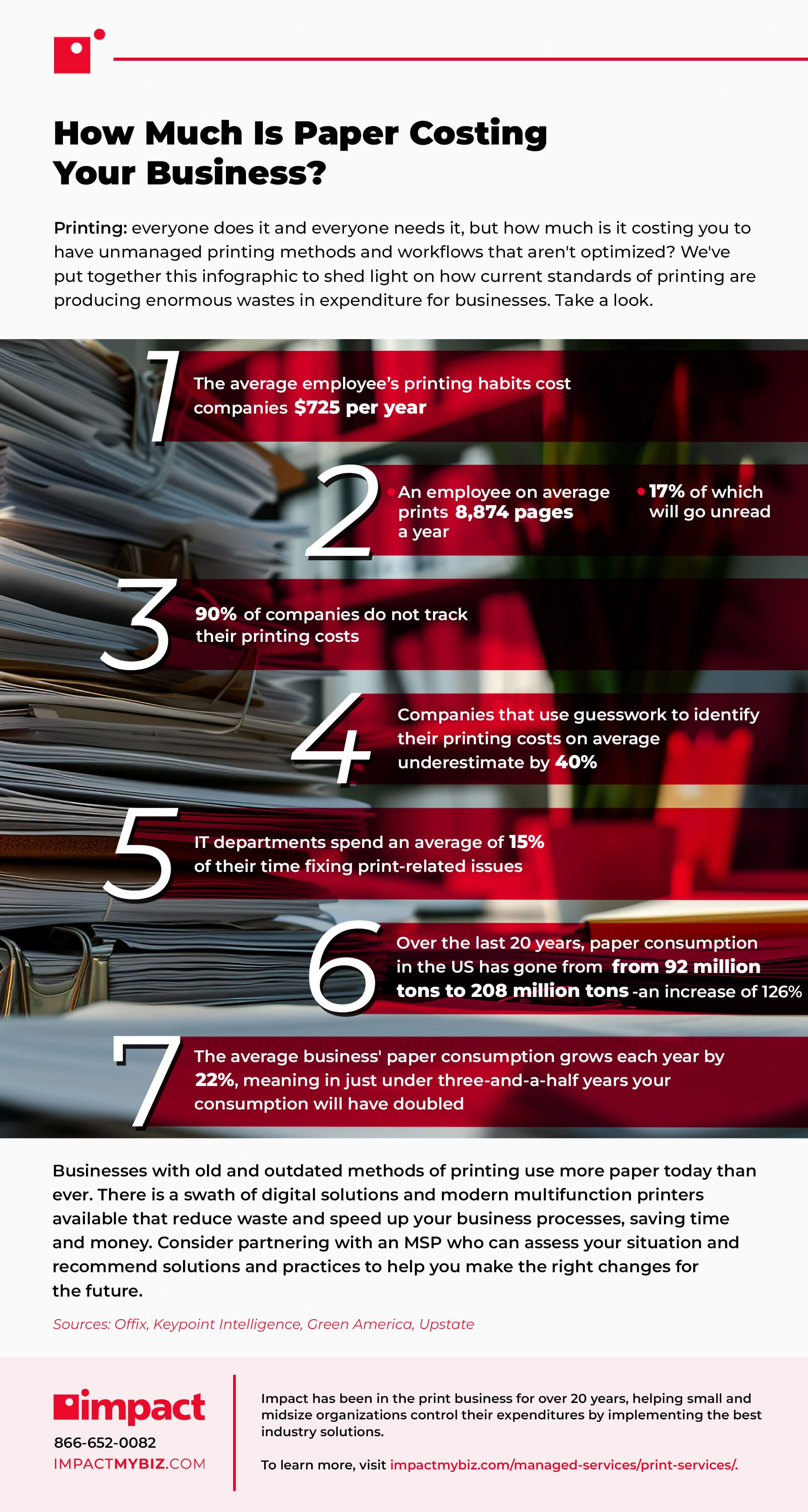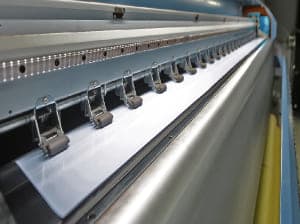Despite the digital era in which we find ourselves, printing remains a major business activity that is intertwined with daily operations and workflows. That being said, it’s vital for organizations to understand the cost of printing so they can properly allocate budget, time, and resources.
While printing costs might seem like a little bit of a mystery, or even a negligible expense for which you don’t need to account, these daily activities can quickly add up to surprising levels. By taking the time to really understand how much printing activities cost your business, you’ll be able to conduct a cost-benefit analysis, reduce waste, and streamline processes, all-in-all resulting in major savings.
Many organizations have little or even no visibility into how they manage their paper consumption and printing costs, both of which can quickly spiral out of control without anyone even realizing.
As organizations continue to focus on standing out in a hyper-competitive marketplace, having a granular understanding of your expenses will allow you to dedicate resources where they’re needed most.
Additionally, with the volume of data being handled by organizations growing so rapidly, more documentation, and in turn, more printing activities have come about. Let’s take a closer look at how printing costs are influencing your operations.
If you're looking to replace or upgrade your printing solutions, browse the Impact Store for whatever it is you need.
Is Print Still Important for Modern Businesses?
Print hasn’t disappeared—it’s adapted. While digital tools have reshaped how companies communicate, print continues to serve specific, high-impact roles across industries. It’s not about nostalgia; it’s about utility.
Printed materials still carry weight in brand presentation. A well-produced brochure, business card, or product label offers a physical presence that digital assets can’t replicate. These items often serve as the first impression, and in many cases, they’re the ones that stick.
Customer-facing businesses rely on print to shape experiences. Menus, signage, packaging, and receipts aren’t just functional—they’re part of the brand story. These elements help create consistency and trust, especially in environments where face-to-face interaction matters.
In sectors like healthcare, legal, and manufacturing, print remains a practical necessity. Compliance documents, patient forms, manuals, and labels are often easier to manage and more reliable in physical formats. Digital systems may be faster, but they’re not always the right fit for every task.
Print also continues to deliver in marketing. Direct mail, posters, and event materials offer a way to stand out—especially when digital channels are oversaturated. And with better print management tools and sustainable materials, companies can control costs and reduce waste without sacrificing quality.
Print isn’t competing with digital—it’s complementing it. Businesses that understand when and how to use print are the ones getting the most out of both worlds.
Is AI Affecting Print?
AI is transforming how businesses manage and produce printed materials. Design automation tools can now generate layouts, adapt assets across formats, and suggest visual improvements—cutting down production time and reducing reliance on manual design work. For teams juggling multiple campaigns or tight turnarounds, this means faster output without sacrificing quality.
Operationally, AI is helping companies optimize print logistics. Smart systems analyze usage patterns to forecast demand, reduce waste, and streamline inventory. This leads to more efficient print runs, lower costs, and fewer overruns—especially valuable for businesses with high-volume or seasonal printing needs.
AI is also elevating personalization. Machine learning enhances variable data printing, allowing businesses to tailor content based on customer behavior, location, or preferences. Instead of generic messaging, print can now deliver targeted experiences at scale—making it a more strategic part of the marketing mix.
How Much Do Companies Spend on Printing?
The printing habits of the average employee measure at around $725/year.
For any business, these costs snowball and compile over time, and if left unchecked, can easily become untenable. These costs are even harder to swallow when you consider that employees print around 9,000 pages a year, and nearly 20% of them go completely unread.
As the use of big data grows, and information sets become larger, printing habits in turn have changed and it’s more important than ever for decision-makers to get a handle on their organization’s printing habits and have a clear understanding of what their print policies are.
If left unmanaged, printing habits can become an undetected issue.
We’ve put together this infographic to give you an insight into how much your printing habits are really costing you and how these additional expenses are hindering your ability to invest in other initiatives aimed at business growth.


